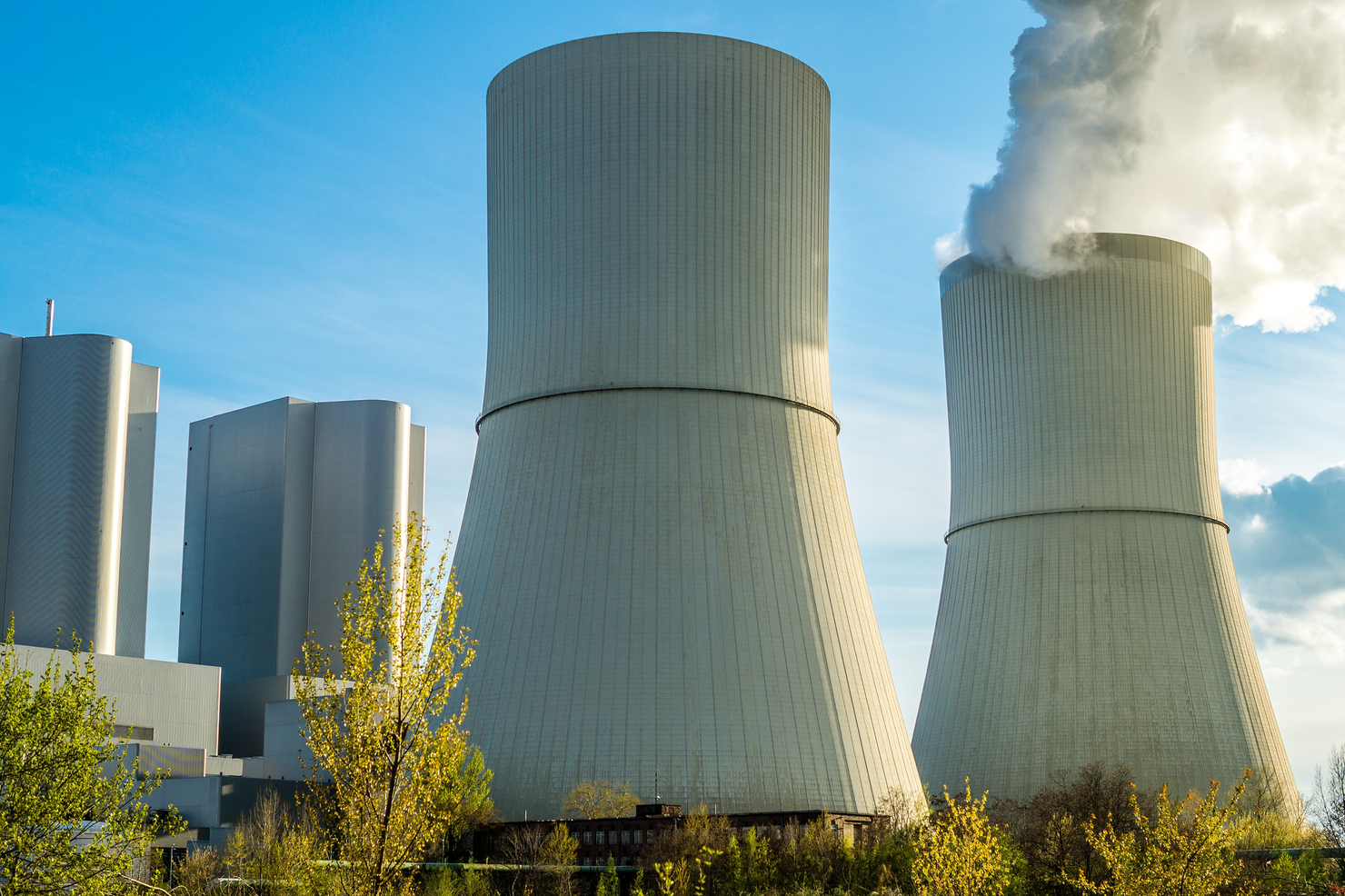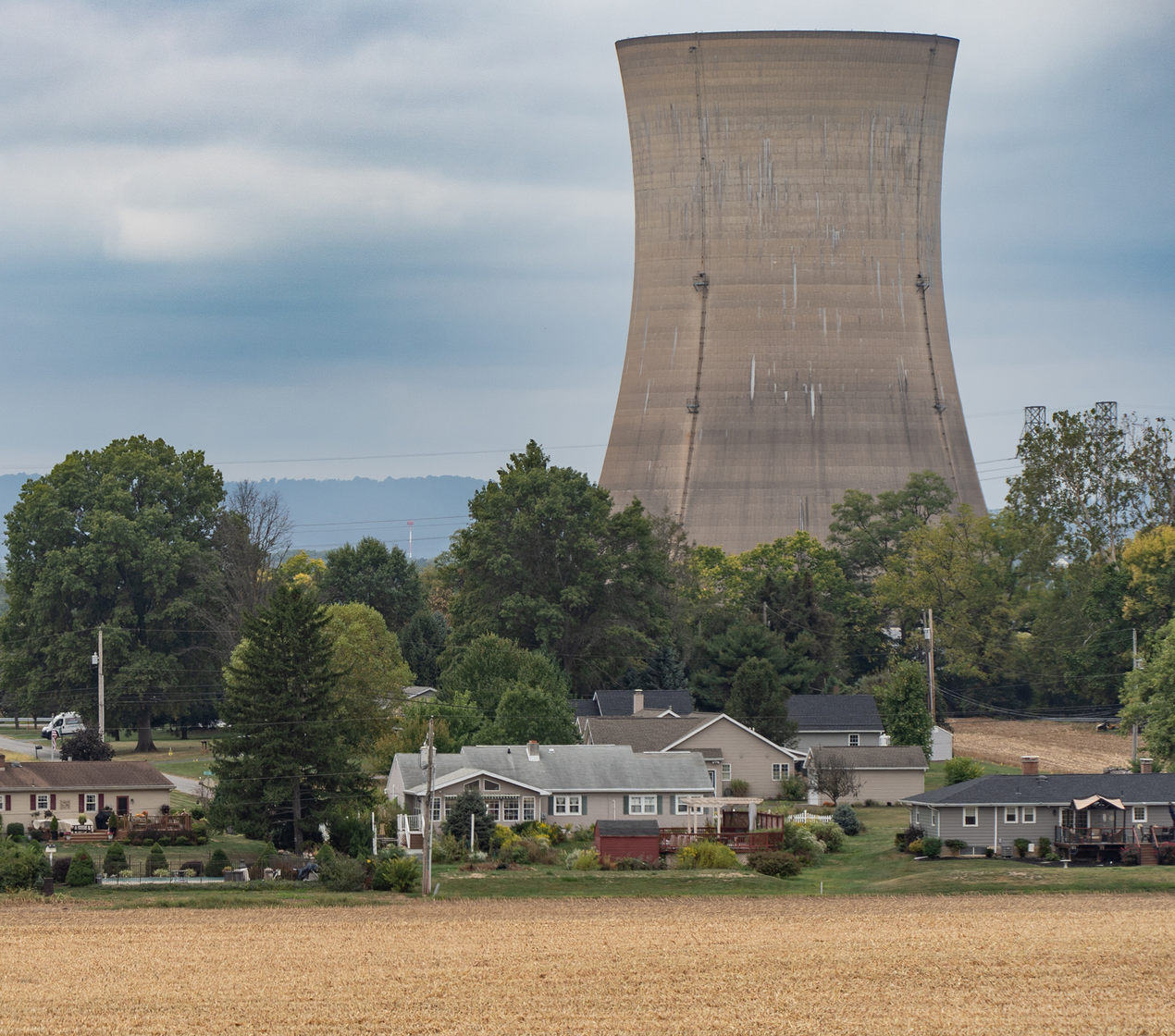A new bonus tax credit may benefit nuclear power projects, but only if the power plants are in urban areas.

In the Inflation Reduction Act of 2022 (IRA), Congress created the legal concept of “energy communities,” part of an effort to steer investment toward places where the coal, oil, and gas sectors play an outsized role in the local economy. If developers located certain clean energy projects in these communities, they would be eligible for an additional 10 percent tax credit. The rationale here was pretty clear: steer investment in clean energy development toward places that historically have been reliant on coal, oil, and gas.
But as I and others have written, the way that Congress defined “energy communities” was extremely broad and poorly targeted. Although roughly 50 percent of US land mass qualified as an energy community in 2024 (including Cape Cod, Chicago, Las Vegas, San Diego, San Francisco, Connecticut’s New York City suburbs, and even Disneyland), the definition excludes all of the Permian Basin in West Texas (the epicenter of US oil production), along with oil- and gas-dependent regions in Oklahoma, Colorado, and North Dakota. (To understand how the “energy community” definition came to be, see this article.)
So, while looking to amend the IRA in the One Big Beautiful Bill Act (OBBBA), Congress had an opportunity to redefine “energy communities” to more precisely target the places that face the most acute economic risks from declining fossil fuel production. As it happens, Congress did seize the moment, but not by narrowing the geographic targeting. Instead, the OBBBA broadens the definition to include “nuclear energy communities.” Specifically, the designation includes any metropolitan statistical area (an MSA, which is an important detail I’ll get into later) that:
“has (or, at any time during the period beginning after December 31, 2009, had) 0.17 percent or greater direct employment related to the advancement of nuclear power, including employment related to—
(I) an advanced nuclear facility,
(II) advanced nuclear power research and development,
(III) nuclear fuel cycle research, development, or production, including mining, enrichment, manufacture, storage, disposal, or recycling of nuclear fuel, and
(IV) the manufacturing or assembly of components used in an advanced nuclear facility.”
Why Add Nuclear Communities?
At first blush, this idea seems pretty reasonable. Nuclear closures can have major impacts on local economies, as nuclear plants often are a key employer, offering high-paying jobs and significant tax revenues for local schools and other public services. Maybe Congress wanted to give those communities a boost? Perhaps this provision will help restart some of those closed reactors, as developers are trying to do in Michigan and Pennsylvania?

But a variety of uncertainties in the legislative language aren’t clear on whether the law will, in fact, give those communities a boost. Instead of focusing on places where reactors have closed (or may close in the future), the OBBBA appears to make the bonus credit available for places where new nuclear reactors are built. In all likelihood, the OBBBA will provide a top-up to the existing tax credits (i.e., 45Y and 48E) that already are available for new nuclear plants (and other technologies such as advanced geothermal), which were put in place under the IRA and mostly retained in the OBBBA.
But the definition of nuclear energy communities goes further than that. The OBBBA includes other parts of the nuclear energy industry and allows places to qualify if they had sufficient employment in these sectors as long as 15 years ago. For example, places can qualify if they have had, in any year going back to 2010, at least 0.17 percent of their employment tied to uranium mining or enrichment (which mostly occurs in Wyoming, Utah, and New Mexico), hosted research and development for new reactor technologies (which mostly happens at federal labs, private labs, universities, and corporate headquarters far from the reactors themselves), stored spent fuel (which happens at existing nuclear sites and a couple off-site repositories), or hosted parts of the advanced nuclear supply chain.
As far as I can tell, the intention is not primarily to support communities that face economic hardship from nuclear plants that have closed or are at risk of closure. Instead, the revision appears to boost the tax credits that are available to advanced nuclear projects (and other energy projects), while also steering investment toward places that have been, or will become, homes to the nuclear energy value chain. This approach is consistent with the Trump administration’s stated goals of boosting the broader nuclear industry within the United States and making the nation less reliant on imported fuel and technologies (particularly from Russia and China).
But, as always, the devil is in the details.
How Will the IRS Determine Eligible Communities?
To qualify for the credit, an MSA needs to have 0.17 percent or more of its employment (the same threshold used in the IRA) in the range of sectors described above (e.g., advanced nuclear power generation, its supply chains, research and development). But here’s the rub: we don’t have detailed data on how many people work in each of these industries.
This ambiguity has popped up before. Under the IRA, places can qualify as energy communities if 25 percent or more of their tax revenues come from fossil fuels. The only problem: Comprehensive data isn’t available for local tax revenues from fossil fuels, and the IRS has never been able to enforce this provision of the law. (I’ve done research with colleagues that starts to put some of this data together, but our efforts are far from comprehensive.)
A similar problem arises with nuclear energy communities. Although federal data sets include employment for a variety of subcomponents of the nuclear industry, the data doesn’t cover all of the activities enumerated in the OBBBA. For example, employment data from the US Census includes statistics for employment at nuclear power plants (North American Industry Classification, or NAICS, code 221113), but most of the other sectors identified in the OBBBA (e.g., nuclear power plant construction, advanced nuclear research and development, uranium mining and enrichment) are not specified in federal employment databases. Instead, data on these industries is aggregated into a broader “grab bag” of small but related industries, such as “power and communication line and related structures construction” (NAICS 237130), which includes nuclear power plant construction, and “other metal ore mining” (NAICS 212290), which includes uranium among a host of other elements.
In short, the IRS is going to have to implement this part of the law without the federal data it needs.
Which Places Will Be Covered?
How much of the United States might qualify under these provisions? Because of the data problems described above, and because we don’t know where new nuclear reactors will be developed in the future, it’s very hard to say for sure.
One thing that is clear is that many communities that host nuclear reactors will not qualify because they are outside of any MSA. For example, La Salle County, Illinois, a rural region that hosts a large nuclear plant, will not qualify because it is not in an MSA (it is in a micropolitan, not a metropolitan, statistical area).
This provision also will affect the eligibility of communities that host new nuclear projects. For example, Plant Vogtle Units 3 and 4—which use a qualified advanced reactor (the AP1000) and came online in 2023 and 2024—sit in Burke County, Georgia, which is part of the Augusta-Richmond County MSA. So, Vogtle will be eligible if it meets the employment threshold. But in other cases, such as the Kemmerer advanced nuclear project in Lincoln County, Wyoming and the Long Mott Energy project in Calhoun County, Texas, the bonus tax credit will not be available because both fall outside any MSA. (However, these places could still qualify for the energy community bonus under the original IRA definition if they meet the relevant requirements for coal closures or fossil energy employment.)
Where Does This Leave Us?
Under both Democratic and Republican control, Congress has sought to define “energy communities” in the United States. But both efforts have surprising quirks in the ways that they define employment, and in the regions they include and exclude for eligibility.

Looking forward, we’ll find a lot of uncertainty, but a few things are clear. First, policymakers are interested in supporting energy communities. As I’ve written with colleagues, supporting energy communities is an important policy objective for reasons of both fairness and the political viability of any energy transition. Second, it’s not easy to do this well. Designing policies to target the right places often requires time and access to technical expertise that congressional staff may not have.
Perhaps Congress will revisit the “energy communities” provision in the months and years ahead to more precisely target resources to the places that need them most. If and when these tax provisions are reconsidered, closer attention to detail will allow Congress to develop the right metrics and the right terminology so that taxpayer dollars (or, in this case, forgone tax revenue) are used to achieve the goals that lawmakers intend.
If: Lawmakers intend to steer investment toward US energy communities, including those that rely on coal, oil, gas, and nuclear energy,
Then: Congress will need to update its metrics and terminology to more precisely target the places that are most reliant on those sectors.

Important Note from the Author: This blog post was edited to update a version that appeared on August 4, 2025. In the original version, I incorrectly estimated that employment related to nuclear energy and its supply chains accounted for 0.56 percent of total US employment, and that all major US cities likely would be defined as “nuclear energy communities.” This overestimate came about because I misinterpreted employment classification codes in the North American Industry Classification System. I apologize for this analytical error and for any confusion it may have caused.

For more timely insights about developments in environmental and energy policy, browse the If/Then series.






